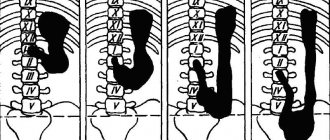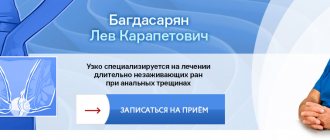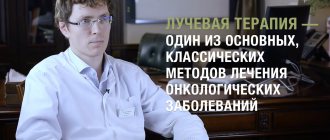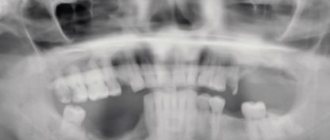Gangrene is the death of human body tissue. It develops when the blood supply to the affected part of the body is cut off due to various factors such as infection, vascular disease or injury. Gangrene can affect any part of the body, but the most commonly affected areas are the extremities (feet, arms, legs, hands).
1.General information
Gas gangrene is one of the most severe forms of infection caused by anaerobic (living only in the absence of air) pathogenic microorganisms. Once upon a time, gangrene, being a rapidly progressing life-threatening condition, was one of the most common causes of death and loss of limbs, for example, in military field medicine, where in pre-antibiotic times the possibility of primary surgical treatment of wounds was very limited, and their infection, on the contrary, was almost guaranteed .
However, even today gas gangrene, with all its inherent threats, is encountered in traumatological, infectious-parasitological, general and vascular surgical practice, continuing to claim the lives of patients.
A must read! Help with treatment and hospitalization!
Hybrid surgery in the treatment of dry gangrene without amputation
This is the combined use of bypass surgery and angioplasty to solve the problem of restoring blood flow within a single intervention. Hybrid surgeries are performed in our clinic to achieve optimal clinical results for complex vascular lesions. They expand the possibilities of vascular surgery and allow us to save the leg in the vast majority of patients with gangrene. A shunt works well only when the artery above and below it is well patent. If there are atherosclerotic plaques and narrowings above or below the shunt, then blood stagnates in such a shunt and thrombosis occurs. A shunt to treat gangrene allows you to bypass long-term blockages in the arteries, and then by performing angiography and angioplasty below the shunt, we ensure unimpeded blood flow to the foot and toes. The use of such tactics allowed us to save the leg in 96% of patients with impending ischemia.
2. Reasons
Of all the anaerobes that can cause gas gangrene, the most widespread and studied is the genus Clostridia - an opportunistic rod-shaped bacterium that is sown in approximately every fourth healthy person (it lives in the intestines, vagina, and is sometimes found in saliva and on the oral mucosa). Over ten of the most dangerous types of clostridia are known, the abnormally active activity of which leads to the development of gas gangrene in its various forms, and also causes botulism, severe diseases of livestock, etc.
Clostridia can develop, actively reproduce and secrete deadly toxins only in airless environments, i.e. They are obligate anaerobes - oxygen in the air is harmful to them. However, the spores they form are able to survive for quite a long time in the environment, and in the etiopathogenesis of gas gangrene, infection of the wound by soil is of great importance, especially if this soil contains cattle manure.
Dead organic matter serves as a breeding ground for pathogenic bacteria, so anaerobic gangrene can begin in almost any oxygen-free zone of the body, where necrosis develops for one reason or another. There is every reason to call this type of gangrene gas: the vital activity of anaerobic bacteria is accompanied by the intense release of not only toxins, but also gases.
Visit our Dermatology page
Anaerobic gangrene
Anaerobic (gas) gangrene is a severe wound infection with predominant damage to connective and muscle tissue caused by strict anaerobes. It has a peculiar course: a progressive increase in edema, gas formation, tissue necrosis, a serious condition of the body as a result of poisoning by microbial toxins and tissue decay products. The causative agents of anaerobic (old name - gas) infection are characterized by development in an airless environment, so it usually occurs when the wound is contaminated with soil. In 80% of gangrene is caused not by any one anaerobic pathogen, but by a combination of two or three of them. Often they coexist in the wound with pyogenic bacteria (staphylococcus, streptococcus). The incubation period ranges from 1 to 7 days. The earlier the process develops, the more severe its course is usually. Sometimes there are fulminant forms that develop in the first hours after injury or repeated trauma.
The following conditions predispose to the development of anaerobic infection in a wound: wounds of the lower extremities with extensive crushing and bruising of tissue and severe contamination of the wound with earth, scraps of clothing, etc.; circulatory disorders caused by injury, ligation of great vessels, compression of blood vessels with a tourniquet or tight bandage; factors that reduce the overall resistance of the body: shock, anemia, hypothermia, prolonged fasting, vitamin deficiencies, secondary trauma due to insufficient transport immobilization.
Symptoms and course:
The clinical picture is varied and depends on the type and virulence of the anaerobes that caused it, the extent of the process, the body’s resistance, the degree of its intoxication and such aggravating factors as blood loss, shock, exhaustion, etc. General and local manifestations of anaerobic gangrene are determined by its forms (edematous, emphysematous, mixed , phlegmonous, etc.).
Early symptoms of an anaerobic infection are inappropriate behavior of the patient (restlessness, agitation or, conversely, lethargy, adynamia), increased body temperature, rapid pulse, pain in the wound, pain and soreness along the vascular bundle of the limb, a feeling of pressure from the bandage.
When examining the wound, one can note a change in the nature of the wound discharge, bulging of muscles, swelling of the red wound, the appearance of blisters on the skin, traces of depression of a lower leg or ligature applied to the limb, and “cutting in” of sutures. The swollen tissue remains unchanged after finger pressure. Its swelling is indicated by clearly defined depressions at the root of the hair. Swelling extends to a segment of a limb or the entire limb.
Palpation of gas in the tissues (symptom of crepitus) makes the diagnosis indisputable. The formation of gas, as a rule, begins in the deep layers of tissue and is difficult to detect in the initial period of the disease. In these cases, an x-ray method can be used to determine the presence of gas in the deep layers of tissue; with the help of repeated studies, an increase in edema can be detected.
The combination of symptoms such as pain, high body temperature, and increased volume of the limb serves as an urgent indication for immediate revision of the wound. This triad of signs refers to the early signs of anaerobic infection.
There are slowly and rapidly progressing anaerobic infections. Slow progression is characteristic of localized, localized lesions. The infection develops gradually, the pain is mild, the intoxication is moderate, there is an accumulation of gas around the wound, and the wound discharge is serous-putrefactive with an unpleasant odor. This type of localized anaerobic infection is called clostridial cellulitis.
With rapidly developing, rapidly occurring gas gangrene, the incubation period lasts from several hours to two days. Then there is a rapid increase in swelling of the limb, the skin is stretched, the folds are smoothed out. The skin is pale icteric; against this background, spots of bronze or bronze-greenish-blue color appear on the limbs. The epidermis exfoliates in the form of bubbles with transparent or cloudy contents. There is an accumulation of gas in fatty tissue and muscles. The muscles are gray in color and protrude from the wound. Intoxication increases quickly. This type of anaerobic infection is called clostridial necrotizing myositis. The reason for such a rapid development of infection has not been fully elucidated. Clostridial necrotizing myositis is less common than clostridial cellulitis, and it often requires amputation of a limb.
When examining the wound in the case of developed gangrene, bulging of the muscles is determined, which can be waxy and then take on the appearance of boiled meat. The wound is covered with a dirty gray coating. When you press on its edges, gas bubbles are released. There are no granulations, the discharge is scanty, from light yellow to dirty brown, sometimes jelly-like. When a putrefactive infection is attached, the smell of decaying tissue appears.
Changes in exudate, a decrease in its amount, and tissue dryness are an unfavorable prognostic sign. An increase in the amount of serous discharge indicates a subsiding of the process. The appearance of thick purulent discharge indicates the addition of a secondary purulent infection. Swelling wound edges with hyperemia of the surrounding skin indicate severe secondary purulent infection
Important early symptoms are pain in the wound, a feeling of fullness in the limb, and a feeling of tightness of the bandage. Intoxication is indicated by increased heart rate and respiration, inappropriate temperature, lethargy, apathy, lethargy, etc., sometimes, on the contrary, agitation, talkativeness, and restlessness. The temperature, initially low-grade, quickly rises to 38.3-39.C. The pulse quickens to 140-150, breathing 30-40 per minute. Blood pressure drops to 90-80 mm. Hg Art.
Recognition:
When examining the limb and wound, swelling, paleness of the skin, blue-purple spots and stripes on it are usually noted. Subcutaneous emphysema (the presence of gas in the tissue) is observed, determined by palpation or listening with a stethoscope. Gas in tissues is clearly visible on x-rays. The walls and bottom of the wound are gray in color, with scanty discharge; when pressing on its edges, gas bubbles are often released from the depths. The rapid increase in swelling is confirmed - the bandage tied around the limb quickly cuts into the skin.
Treatment
Treatment of patients with anaerobic infection should begin as early as possible. Patients are subject to isolation in boxes or separate rooms. An emergency operation is indicated - wide dissection of the wound, dissection of the fascial sheaths, removal of necrotic tissue, especially muscles. In severe cases, when the changes are irreversible, they resort to amputation of the limbs (without applying a tourniquet or sutures); in especially severe cases, amputation and wide opening of the fascial sheaths of the stump are performed. After surgery, the wound is treated with solutions of chemical antiseptics - oxidizing agents (hydrogen peroxide, potassium permanganate). If there are bone fractures, a limb must be immobilized using skeletal traction and plaster splints (do not use circular plaster casts!).
Specific treatment begins immediately. During the operation, under anesthesia, a therapeutic dose of serum (150,000 IU - 50,000 IU against three main pathogens - Clostridium Perfringens, Clostridium Oedematiens, Clostridium Septicum) is administered intravenously slowly (1 ml/min). The serum is diluted in 300-400 ml of isotonic sodium chloride solution. At the same time, 5 prophylactic doses of serum are administered intramuscularly. When the pathogen is identified, the corresponding serum of the same name is administered. Before administering the serum, a test is carried out for individual sensitivity to a foreign protein: 0.1 ml of serum is injected intradermally from a test ampoule at a dilution of 1:100. If the diameter of the papule is 10 mm or more with hyperemia around it, then the test is positive. If the intradermal test is negative, 0.1 ml of serum is injected subcutaneously and, if there is no reaction after 30 minutes, a dose of serum is administered intravenously or intramuscularly.
An important place in complex treatment is occupied by detoxification transfusion therapy - up to 4 liters of fluid per day (polyionic solutions, detoxifying blood substitutes - hemodez, neocompensan; drugs that improve microcirculation - rheopolyglucin, etc.; glucose solutions, protein blood substitutes). The patient must be provided with rest, adequate nutrition, and symptomatic treatment. Antibacterial drugs include semi-synthetic penicillins, aminoglycosides, and semi-synthetic tetracyclines.
Oxybarotherapy occupies an important place in the complex of therapeutic measures. It allows you to reduce the volume of surgical intervention without resorting to early amputations of the limb. However, the basic principles of surgical treatment remain unchanged.
Prevention:
The best is the following set of measures: clean skin and clothing, timely first aid for wounds, prevention and treatment of shock, bleeding, anemia, early full active surgical treatment of the wound. In the first days after it, careful observation of the wounded helps to identify the initial stage of the disease. For contaminated wounds, intramuscular administration of 1-2 doses of anti-gangrenous serum is of prophylactic value.
Patients with anaerobic gangrene are isolated in a bright, well-ventilated room, and experienced staff are assigned for care. Success is determined by early diagnosis and comprehensive treatment. It provides: to stop the spread of the process; reduce the absorption of toxins and eliminate existing intoxication; normalize impaired functions of organs and systems; stimulate the immunobiological forces of the body.
3. Symptoms and diagnosis
A common property of all types of gas gangrene is rapid spread and progression.
There are four main forms of gas gangrene:
- emphysematous (emphysema - “airing” of tissue), typical gas gangrene, practically without pus, but with widespread necrosis, violent gas formation (with a cadaverous odor) and visible tissue decay, incl. muscles;
- edematous-toxic (as the name implies, swelling and symptoms of general intoxication predominate);
- phlegmonous (diffused necrotic inflammation predominates);
- putrefactive, or putrid (rapid decay of muscle tissue, grayish color, purulent-putrefactive discharge with the release of sharp-smelling gases.
Intoxication is manifested by a significant decrease in blood pressure, tachycardia, altered state of consciousness (pathological excitation or, conversely, depression of the central nervous system), high body temperature (up to 39° and above, which is a prognostically unfavorable sign), impaired renal function, etc. In the absence of qualified and full-scale medical care, death inevitably occurs within the next 1-3 days.
Diagnosis is usually not particularly difficult: the history and dynamics of the condition are studied, the wound is examined, x-rays, blood and urine tests are prescribed (where gas gangrene reveals a complex of changes characteristic of it).
About our clinic Chistye Prudy metro station Medintercom page!
Gangrene of the lower extremities treatment with modern methods
The approach to treating gangrene varies depending on its causes. In our clinic, the treatment of choice for gangrene of the leg is treatment without amputation. Every year, patients with critical ischemia who have already been sentenced to amputation in other vascular and surgical departments are operated on in the hospital of the Innovative Vascular Center. For most of them, we manage to keep their legs and the ability to walk. The main reason for our success is the use of advanced technologies and the narrow specialization of our vascular surgeons.
4.Treatment
Stopping the progression of gas gangrene is possible only by intensive surgical treatment of the wound with excision and removal of dead tissue (including healthy tissue). Powerful antibiotics are prescribed, hyperbaric oxygenation of the wound, drainage is applied, and the wound is left open. If, despite all efforts, the progression of gangrene cannot be stopped, the limb is urgently amputated. It is also necessary to take the most serious aseptic measures to avoid further spread of the pathogen (in particular, infection of medical personnel). Existing anti-gangrenosis serums, in general, do not yet live up to the hopes placed on them and, in addition, such vaccination is fraught with serious complications.
Why are there problems in Russia with treating gangrene without amputation?
- Vascular surgeons in most clinics in our country are afraid of purulent-necrotic wounds like fire and do not accept patients with necrosis on the foot. After all, they deal with “pure” pathology and are afraid of spreading the infection. As a result, only a few clinics perform vascular surgery for gangrene in Russia. The main problem of vascular and surgical departments is that their doctors have little knowledge of what gangrene of the legs is, symptoms, signs and methods of treatment. Severe pain, symptoms of intoxication, even with the development of dry gangrene of the toe are a contraindication for them to perform vascular surgery. Unlike gas gangrene in diabetes mellitus, in dry gangrene there is no reason to fear the spread of infection, since the pathological process occurs only in a certain segment of the limb.
- Endovascular surgeons deal with the problem of chronic arterial insufficiency by eliminating blockages in blood vessels. However, if angioplasty and stenting fail, the situation usually worsens and an open intervention must be done immediately, but they do not know how to do this. While the patient gets to vascular surgeons, the leg may die. Having restored blood flow through the arteries, endovascular surgeons consider their task completed, because they do not deal with wound processes and send patients to the purulent surgery department, where their leg is easily amputated, despite good blood flow. When you ask the endovascular surgeons of the federal centers what gangrene of the legs is, its symptoms and treatment, they will not answer you, because there are still no quotas for the treatment of critical ischemia, so the federal center is simply not interested in treating such patients.
- General surgeons in departments of purulent surgery have no idea about the level of blood supply to tissues and do not know the methods of reconstructive plastic surgery that allow closing large wound defects. For them, there is no better treatment for gangrene than to do amputation, as high as possible, in order to forget about a difficult patient. They consider even the first signs of gangrene in the initial stage to be a threat to the patient’s life and suggest amputating the leg, fearing possible blood poisoning.










